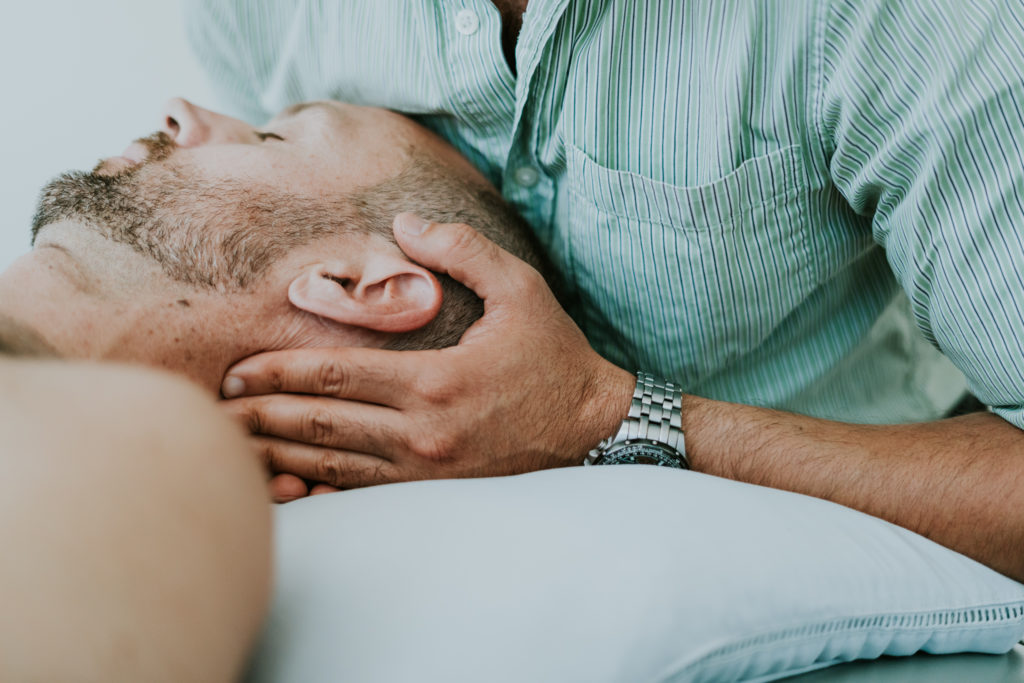Dizziness, Benign Paroxysmal Positional Vertigo
We treat that too!
Dizziness and balance disorders are more common than you think. They account for 5-10% of all physician visits and affect approximately 50% of all adults at some time. Physiotherapy can help with certain types of dizziness.
Dizziness and balance disorders may be caused by problems in your cardiovascular system, your central nervous system, your visual system, your orthopaedic system, or your vestibular system. A physiotherapist with the specialized training can help you with balance disorders related to:
1) your orthopaedic (bones, muscles, joints) system, and
2) the peripheral vestibular (inner ear) problems termed Benign Paroxysmal Positional Vertigo (BPPV), and with uncompensated Unilateral Vestibular Lesion (UVL). People with uncompensated Bilateral Vestibular Lesions (BVL) can improve with physiotherapy treatment but their recovery is more limited by their injury than someone with a UVL.
Benign Paroxysmal Positional Vertigo (BPPV)
BPPV is the most common cause of vertigo due to a peripheral vestibular disorder. It occurs in all age groups but more commonly among older adults. Onset is often mysterious, but occasionally follows head trauma or ear infection. It causes vertigo when bending forward, looking up, rolling over in bed and lying down. The symptoms are usually of short duration (less than 60 seconds). BPPV can resolve spontaneously or it may trouble people for years. It can also be recurrent. The symptoms of BPPV are caused by small calcium crystals that become stuck in an inappropriate area of the inner ear. This causes unusual signals to the brain and makes you feel dizziness or vertigo. Treatment involves a series of positional changes intended to relocate the crystals to their normal area. This often relieves symptoms quite dramatically.
Unilateral Vestibular Lesion (UVL) – Uncompensated
Your vestibular system refers to the balance organs of the inner ear and the associated neural pathways in the brain. You have a vestibular apparatus on each side of your head. A UVL refers to a loss of function on one side of the vestibular system. There are a variety of causes for such damage. Symptoms usually include an initial crisis of acute vertigo or dizziness and occasionally nausea. As the acute crisis passes symptoms reduce but can persist as dizziness and poor balance.
The loss of function on the damaged side is often permanent but you can compensate for this loss using the undamaged side of your vestibular apparatus. Treatment is designed to train the undamaged side of the vestibular system to compensate for the loss of function on the other side.
ASSESSMENT
Patients undergoing physiotherapy treatment for their dizziness, should arrive 30 minutes prior to their appointment time to fill out forms and some questionnaires regarding their symptoms. Be aware that the assessment will involve reproducing some of the symptoms to help determine how to best treat your condition. Because of this you may be symptomatic or fatigued after the assessment and should try to arrange alternate transportation home rather than driving yourself.
TREATMENT
Treatment for BPPV is fairly straightforward and usually very effective. There are some limitations on movement and sleeping positions for the week following treatment and there is usually a follow-up visit one week later
Treatment for UVL involves exercises and balance drills that are provocative to your symptoms. Although this approach is not necessarily enjoyable (it can make you dizzy) it is effective and if you are persistent with your exercises you should start to see some improvement in 3 – 6 weeks. Treatment for bilateral loss of vestibular function (BVL) is similar to UVL but more challenging as there has been more tissue damage and you therefore have less ability to compensate. People afflicted with BVL can still improve but not to the same extent as a person with a unilateral loss of function.
Burrard Physiotherapy has physiotherapists on staff who are trained in this specialty area. (A one hour appointment is required with Gemma Greig, Alice Podmore or Shahab Rezania)

